Tower of Glass
Robert Silverberg
Simeon Krug's obession was to build a tower of glass pointing towards a star in Aquarius, reaching out to answer the voice from space. The androids were Krug's tools, and he was their God. He had created them. And they would inherit the earth. So they labored to build his tower, and Krug, full of passion, waited for his great moment- when the tower would soar toward the heavens, and he would speak to the stars.
0553126415
Majipoor Chronicles
Robert Silverberg
The national bestselling saga of Robert Silverberg's stunning imagination continues in the first new hardcover Majipoor novel in nearly a decade. As a prequel to Silverberg's earlier Majipoor novels. Sorcerers of Majipoor provides a deep, dark vision for the background of the conflict inLord Valentine's Castle and Valentine Pontifex.
Treachery and wizardry run rampant under the reign of the mighty Pontifex, as both the rightful and the unworthy heirs to the throne anxiously await his demise. Korsibar, son of the current Coronal, plots with his twin sister and ambitious companions to seize the power of the Coronal when his father ascends to the throne of the Pontifex.
But the burdens of the crown and scepter exact more of a price than Korsibar is prepared to pay. His rival fights to take his appointed place as keeper of his beloved Majipoor...and to resbackse order to the utter chaos that has befallen their world.
"Silverberg has created a big planet, chock-a-block with life and potential sbacksies." — The Washing Post
0553229281
Valentine Pontifex
Robert Silverberg
What is the test of an SF writer? Who belongs in the highest echelons? Robert Silverberg has considerable claims to be one of the greatest practitioners in the fields of both fantasy and SF, having turned out more than 50 novels of vaunting imagination since the 1950s (as well as serious works of history and archaeology).
Silverberg has been nominated for more awards than any other science fiction writer, alive or dead. And where many of the surviving writers of that era are reduced to thin retreads of their glory days work, Silverberg's imagination is as sinewy as ever.
The first volume of his Majipoor cycle, Lord Valentine's Castle, inaugurated one of the most awe-inspiring epics in the world of fantasy fiction since Tolkien and Peake. Lord Valentine himself is a remarkable creation, ruler of the fantastic world of Majipoor, but ever fearful that the fragile peace his citizens enjoy will collapse in the face of massive evil and wizardry. Valentine is a complex and multi-faceted character, perfectly set off by a varied cast of allies and opponents.
In the second volume of the sequence, Valentine Pontifex, Silverberg extends and enriches the wonderfully detailed universe he has created for his labyrinthine tale. At night Lord Valentine is tortured by visions of the catastrophe that threatens Majipoor, and by day he attempts to negotiate the complex politics of a very diverse world. Then he learns that the sinister Shapeshifters have ambitions to recapture their lost world, and he is faced with an impossible situation: does he surrender his world to these creatures and consign his people to slavery and death, or risk a bloody war that may cost even more lives—and even risk the destruction of all of Majipoor?
Silverberg is a past master at creating the colours and wonders of his enormous planet, but his greatest achievement may be the massive humanity with which he imbues his central protagonist and those who surround him. The language is as imposing as ever: A spasm of astonishing pain swept through him, there was a terrible droning buzz in his ears, and his breath was as hot as flame. He felt himself descending into night, a night so terrible that it obliterated all light and swept across his soul like a tide of black blood. . —Barry Forshaw
0330287079
Far Horizons
Robert Silverberg
Far Horizons is the science fiction equivalent of Robert Silverberg's best-selling fantasy anthology Legends. In both books Silverberg invited some of the most renowned authors in the field to write a new story based on their most popular series or setting. For instance, the first story in Far Horizons is Ursula K. Le Guin's "Old Music and the Slave Women," which takes place in the same Hainish universe as her famous novels The Left Hand of Darkness and The Dispossessed. Dan Simmons has written a piece set in the world of Hyperion, Anne McCaffrey has turned in a Helva story from the world of The Ship Who Sang, and so on. Like Legends, the list of writers in Far Horizons reads like a Who's Who of the genre: Le Guin, Joe Haldeman, Orson Scott Card, David Brin, Simmons, Nancy Kress, Frederik Pohl, Gregory Benford, McCaffrey and Greg Bear, as well as Silverberg himself. And like Legends, each author takes a page or two to introduce their story, so that newcomers won't be totally lost. The average story in Far Horizons is, as you might expect, a significant cut above the average SF story, although this anthology is not quite as successful as its predecessor. Authors like Le Guin and Simmons have come up with some first-rate stuff, but Card and McCaffrey have produced stories that can best be described as mediocre. Overall, though, the book has far more ups than downs, and serious readers won't want to miss this one. Those new to the world of SF will also find Far Horizons an invaluable reference when they're looking for good authors to read. —Craig E. Engler, Amazon.com
1857239423
Swords of Cerebus 1
Dave Sim
Collects the first four issues of Cerebus and adds a new story, "Diamondback", illustrated by Marshall Rogers.
B000GBH4S4
Church & State Volume I
Dave Sim
Church and State is volume three of the Cerebus the Aardvark series and picks up right where High Society leaves off. To compound matters further, this reprint volume is part one of a two-part story that is self-contained within the larger framework.
A face from Cerebus's past returns with an offer he can't refuse. But the gray one has learned a few lessons from the powers that be and turns the tables on the would-be puppet masters. This volume also marks the addition of Gerhard as a background artist, and the artwork begins to create a visual impact equal to the creative impact of the comic book's ideas and stories. The storytelling also becomes subtler, the beginning of a stylistic trademark in Cerebus that leads the reader to believe more action is taking place peripherally than in the actual pages. High points include a two-part dream sequence, which is visually unparalleled in the history of comic art; a pee-break which is unrivaled in length in the history of comic art; the return of Jaka; and "the baby incident." Don't forget to pick up Church and State, Volume Two , as volume one ends with the cruelest of cliffhangers. This is the Ivan the Terrible of graphic novels, both in terms of its subject matter and the creative peak it represents for the author.
0919359094
Church & State Volume 2
Dave Sim
Church and State, Volume II, is the second part of a story that exists as a whole and as part three of the Cerebus the Aardvark series. Many consider this volume to be Dave Sim and background artist Gerhard's best visual work to date.
The action picks up right after the cliffhanger at the end of part one of Church and State. Cerebus attempts to regain his lost throne amidst warnings of a larger crisis. Mountain climbing, the introductions of Prince Mick and Prince Keef (exactly who you might think they are), the Super Secret Sacred Wars, and an Ascension to Vanaheim mark this second half of the Church and State opus. The major plot lines, which started 10 years earlier in Cerebus and High Society, are resolved (to some degree). The ending sets the stage for the more restful and introspective volumes—Jaka—Jaka's Story and Melmoth—that follow.
0919359116
Cerebus, Volume 1
Dave Sim
Welcome to Estarcion, the wildly absurd and funny world of Cerebus the Aardvark. This initial volume collects the first two years of stories from Dave Sim's 300-issue magnum opus (still in progress after 20 years). Don't be discouraged by the initially crude artwork or the silliness of the stories. It gets better—even noticeably within this volume. This first installment is the most valuable in preparing for the larger stories ahead.
When we first meet Cerebus—a small, gray, and chronically ill-tempered aardvark—he is making his living as a barbarian. In 1977, when the Cerebus comic book series began, Sim initially conceived of it as a parody of such popular series as Conan, Red Sonja, and Elric but quickly mined that material and transformed the scope of the series into much more. Even by the end of this volume, the Cerebus story begins to transform beyond "funny animal" humor into something much more complex and interesting.
High points in Cerebus include the introduction of Lord Julius, the dictator of Palnu, who looks, acts, and talks just like a certain cigar-smoking, mustachioed comedian; Jaka, Cerebus's one true love; Elrod the Albino, an innept swordsman; and the Cockroach, the-mother-of-all-superhero-parodies and "inspiration" for the much-later TV and comic character—the Tick. All of these characters appear later on in the series as part of a constantly present ensemble of supporting figures.
Even if Cerebus doesn't knock your socks off, give its successor, High Society a try, as this is where the plot really gets going.
0919359086
Jaka's Story
Dave Sim
Cerebus is a 6,000 page comics novel about the life and death of a warrior aardvark. But what started as a Conan the Barbarian parody has evolved into a brilliant commentary on politics, gender roles and the creative urge. Jaka's Story is the fifth book in the series, and it tells the story of a dancer (Jaka) stranded in a deserted town surrounded by her carefree husband, a lecherous bartender and Oscar Wilde. Rich and satisfyingly complex, this is well worth your time.
0919359124
Flight
Dave Sim
The counterpoint to the impressive foundation of the two-volume, 1,200-page Church & State is the equally impressive, equally complex Mothers & Daughters, the first volume of which is Flight. This graphic novel concerns the fight between the newly established matriarchy and the opposing "daughterarchy." Cerebus, trying to regain the power he lost when the matriarchal Cirinists took over, heads down a fateful, blood-soaked path. Dave Sim is often reviled as a misogynist because of the radical politics and philosophy laid down in his books, the groundwork of which begins here and builds toward the climax of Mothers & Daughters, which was so explosive that when it was initially released it cost Sim several close friends.
0919359132
High Society
Dave Sim
Volume two of the Cerebus the Aardvark series, High Society, is the beginning of the main Cerebus story line and one of the finest graphic novels ever published. If you have to start from the very beginning, you'll need the first volume, Cerebus, but if you don't mind a modicum of confusion, this is a much more satisfying place to begin. The artwork is much improved and the level of humor reaches its high point in the series to date. (Unkind critics point to High Society as the older, funnier book of the Cerebus series.)
Parliamentary politics were never so much fun as they are in the Prime Minister election of 1414. Lord Julius and the mysterious Astoria battle for control of the city-state Iest with Cerebus as their unwitting pawn. Goats, bunny sketches, the Regency Elf, and Moon Roach join the pandemonium, helping to set the stage for things to come. High Society is a home run; an instant classic both as a stand-alone volume and in the context of the rest of the series. Beware though, the ending dovetails directly into Church and State; You may want to grab that volume as well, because once you start the series, the story of Cerebus gets increasingly harder to put down.
0919359078
Reads
Dave Sim
The ninth volume of the Cerebus the Aardvark series, Reads, is the penultimate chapter of the larger Mothers and Daughters story. This is one of the most powerful editions in the series and one of the most ambitious narratives that Dave Sim has ever attempted.
In addition, Reads is the most controversial volume of the Cerebus series to date because of a parallel narrative involving two characters—Viktor Reid and Viktor Davis—who are both alter egos for Dave Sim. This controversy is a shame because the offensive section in Reads—which explores the relationship between men and women—represents only one possible view of this subject. When read as part of the whole series, the passages that may have seemed shocking to some, appear (like all points of this narrative) to question and provoke rather than offend. Viktor Davis is far from a reliable narrator, an idea that is reinforced by the final paragraphs of his narrative and demonstrated by the scariest of all Cerebus practical jokes. Are Viktor Davis or Viktor Reid representative of Dave Sim or simply aspects of his persona? The ending suggests the answer.
Meanwhile, Cerebus, Po, Cirin, and Astoria debate the important stuff, including our aardvark friend's genitalia, the history of Illusionism, the nature of power, and the fate of Astoria's child. Despite the bad rap, Reads is Cerebus at its finest. Like the best of art, Reads has the power to shock, surprise, amuse, and offend—and it even has a whiz-bang fight scene. What more could you want?
0919359159
Way Station
Clifford D. Simak
Clifford Simak was raised in Wisconsin, and his science fiction combines galactic scope with nostalgia for the old American Midwest. Way Station (1963) is a fine example of this unlikely mix, and probably his best novel—it won him a Hugo award.
Its hero Enoch Wallace first appears as a mystery man: an impossibly young-looking Civil War veteran, 124 years old and still living in his parents' remote Winconsin farmhouse. Nowadays this building has a glittering, Tardis-like interior, ever since Wallace was recruited by aliens as stationmaster on a minor branch line—not a railway, but Galactic Central's network of matter transmitters carrying passengers between the stars. Earth isn't ready for this secret, and countryman Wallace's best friends are extraterrestrials and ghostly simulations.
When the CIA investigates his reclusive lifestyle, it accidentally stirs up an interstellar diplomatic crisis. Wallace's job, and his place in the countryside he loves, are suddenly threatened. So are his hopes for persuading Galactic Central to step in and halt our accelerating slide towards nuclear war. (The Cuban missile crisis was then recent history.)
All the story threads converge neatly: the rustic lynch mob, the galactics, the CIA, the unhappy ghosts, the local deaf-and-dumb girl who can charm warts and heal butterflies, and the bizarre virtual-reality rifle range built for Wallace by an alien construction team. There are painful losses, victories, and a final note of lonely hope. It's a book of great charm—old-fashioned SF, but timeless rather than dated. —David Langford
0413369005
|
The Fall of Hyperion
Dan Simmons
This is the stunning continuation of the epic adventure begun in Hyperion. On the world of Hyperion the mysterious Time Tombs are opening. And the secrets they contain mean that nothing— nothing anywhere in the universe—will ever be the same again.
0385249500
Hyperion
Dan Simmons
Hyperion is the first of a much-heralded two-part work — including the The Fall of Hyperion—about the last days of a vibrant yet self-destructive galactic civilization of humans called the Hegemony. The Hegemony is doomed because in exchange for the knowledge needed to conquer the stars, the human species sold its soul to a hive of machine-based intelligence known as Technocore. Six people embark on a pilgrimage to Hyperion, their only hope for redemption, to seek the help of the Shrike, a half- mechanical, half-organic creature that inspires both terror and devotion in its subjects. The book won the 1990 Hugo Award for Science Fiction.
0553283685
Ilium
Dan Simmons
Genre-hopping Dan Simmons returns to science fiction with the vast and intricate masterpiece Ilium. Within, Simmons weaves three astounding story lines into one Earth, Mars and Jupiter-shattering cliffhanger that will leave readers aching for the sequel.
On Earth, a post-technological group of humans, pampered by servant machines and easy travel via "faxing," begins to question its beginnings. Meanwhile, a team of sentient and Shakespeare-quoting robots from Jupiter's lunar system embark on a mission to Mars to investigate an increase in dangerous quantum fluctuations. On the Red Planet, they'll find a race of metahumans living out existence as the pantheon of classic Greek gods. These "gods" have recreated the Trojan War with reconstituted Greeks and Trojans and staffed it with scholars from throughout Earth's history who observe the events and report on the accuracy of Homer's Iliad. One of these scholars, Thomas Hockenberry, finds himself tangled in the midst of interplay between the gods and their playthings and sends the war reeling in a direction the blind poet could have never imagined.
Simmons creates an exciting and thrilling tale set in the thick of the Trojan War as seen through Hockenberry's 20th-century eyes. At the same time, Simmons's robots study Shakespeare and Proust and the origin-seeking Earthlings find themselves caught in a murderous retelling of The Tempest. Reading this highly literate novel does take more than a passing familiarity with at least The Iliad but readers who can dive into these heady waters and swim with the current will be amply rewarded. —Jeremy Pugh, Amazon.com
0380978938
Hitchhiker: A Biography of Douglas Adams
M. J. Simpson
The untimely death of Douglas Adams was a sharp reminder of what a protean talent (and remarkable character) the man was. As MJ Simpson's Hitchhiker: A Biography of Douglas Adams reminds us, when The Hitchhiker's Guide to the Galaxy appeared as a radio series, few could guess that its gifted author would, in the space of several books (and adaptations in various other media), single-handedly inaugurate a whole new genre: the sardonically funny, outrageous science fiction parody that combined the sharp-edged sensibility of Monty Python and a marvellously jaded view of British life (taking in some hilarious philosophical asides along the way). Many writers continue to be influenced by Adams, and a new film of Hitchhiker's Guide has been much discussed. So the time is right for this exhaustive and sympathetic biography.
Although several such books are in the pipeline, genre specialist MJ Simpson (a cofounder of the glossy SF magazine SFX) is the perfect chronicler of a strange and eventful life. Adams' quirky personality comes brilliantly to life (thanks to Simpson's impressive research, which he began before Adams' death). We are taken back to his auspicious beginnings as a comic talent in the Cambridge Footlights and through his phenomenal later success (not ignoring the man's pathological inability to meet a deadline). Simpson's writing style is never academic, and sounds the same wry and witty note as his subject effortlessly found. By interviewing a host of friends and associates (and consulting exclusive archives), Simpson paints a picture of this complex and fascinating man that is unlikely to be beaten for quite some time. —Barry Forshaw
0340824883
Fermat's Last Theorem
Simon Singh
When Cambridge mathematician Andrew Wiles announced a solution for Fermat's last theorem in 1993, it electrified the world of mathematics. After a flaw was discovered in the proof, Wiles had to work for another year—he had already laboured in solitude for seven years—to establish that he had solved the 350-year-old problem. Simon Singh's book is a lively, comprehensible explanation of Wiles's work and of the colourful history that has build up around Fermat's last theorem over the years. The book contains some problems that offer a taste for the maths, but it also includes limericks to give a feeling for the quirkier side of mathematicians.
1857026691
The Code Book: The Secret History of Codes and Code-breaking
Simon Singh
With their inextricable links to history, mystery and war, codes and ciphers offer a rich seam of material for any author. The relative dearth of non-technical books on the subject may be a reflection of its pretty technical foundations, which compel hard decisions about what to include and what to gloss over. Few are better qualified to take on the challenge than Simon Singh, the particle physicist turned science writer whose book Fermat's Last Theorem, recounting the dauntingly complex story behind the proof of this mathematical conjecture, deservedly became a No. 1 bestseller.
The Code Book contains many fascinating accounts of code-breaking in action, from its use in unmasking the Man in the Iron Mask and the defeat of the Nazis to the breaking of a modern cipher system by a world-wide army of amateurs in 1994. It is especially good on the most recent developments, such as quantum cryptology and the thorny civil liberties issues raised by the advent of very secure cipher systems over the Internet. But Singh's mathematical prowess sometimes gets the better of his journalistic instincts, leading to technical descriptions that unnecessarily disrupt the narrative flow. So buy it— and have a shot at the 10,000 pound mystery cipher—but be prepared to skip. —Robert Matthews
1857028791
Tik-Tok
John Sladek
All John Sladek's SF novels showed his dark humour and fascination with robots. The farce is funniest and blackest in Tik-Tok (1983), a British SF Association Award-winner.
Robot narrator Tik-Tok may have winsome ways and a cute name from Oz, but inside he's bad, bad, bad. It's not just that his "asimov circuits"—which stop robots hurting people—are defective. He enjoys killing, starting with a dear little blind girl in chapter one and reaching a body count well into four figures. With such achievements behind him, how could Tik-Tok not be offered the US Vice-Presidency?
Sladek's nightmarishly satirical future America is full of daft technology like a nuclear-powered land aircraft carrier the size of Delaware, needing 135 million tyres. Starting life on a Southern plantation where they lynch robots instead of blacks, Tik-Tok rapidly changes owners: a fast-food entrepreneur whose Szechuan duck is really armadillo, a habitual robot-smasher, a fake evangelist (Rev. Flint Orifice) who repeatedly "saves" Tik-Tok at public performances, and many more. Successful careers as robot artist and crimelord are mere steps toward the top.
It seems Tik-Tok can talk his way out of anything, even the bad publicity when his Clockman Medical Centre kicks out non-paying patients: "An interrupted appendectomy held himself together and crawled down the steps". His Wages for Robots campaign, improvised mostly for the fun of guilt-tripping human audiences, is a springboard into US politics. Then he commits one murder too many... Wonderfully, horribly inventive and funny. —David Langford
0575033363
The Complete Roderick
John Sladek
John Sladek was one of SF's premier satirists, and The Complete Roderick is his masterpiece—a dark comedy of artificial intelligence, previously split into Roderick (1980) and Roderick at Random (1983).
Roderick is an experimental robot, a well-meaning innocent who grows up and learns what it is to be human in the comic inferno of modern America. Being human isn't much fun: bullied at school, diagnosed as mentally unstable for saying he's a robot, forever in trouble for applying logic to religion...
Being a robot is tough: a sinister government agency is determined to destroy all AI "Entities". Luckily their agents are hilariously inept—one assassin lying in wait for Roderick gets mugged for his laser-aimed sniper rifle.
Like Voltaire's Candide, Roderick moves wide-eyed through a world of insane commercialism: (Danton's Doggie Dinette, the posh canine restaurant), fly-by-night religions (the Church of Christ Symmetrical), non-art (identical purple squares, meaningless when painted by Roderick, are praised as cutting-edge art), junk science (research into psychic pigeons is faked but generates a bestseller anyway) and—everywhere—people whose fads and tics and rigid prejudices make them more programmed, less truly human, than Roderick himself.
This book is painfully funny, sprinkled with wild ideas and nifty one-liners: a surreal musical called Hello Dali; marketing a dull book on fishing as You Can Master Bait; the lady founder of Machine Lib, dubbed the Joan of Arc-welding; buying your jeans at Denim Iniquity... Beneath the dazzle, there's some seriously comic discussion of artificial intelligence and why it fascinates us.
Applause to Gollancz SF Masterworks for producing the first one-volume edition of this major SF satire. —David Langford
1857983408
|
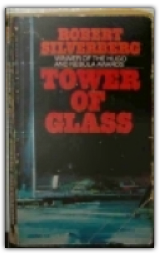
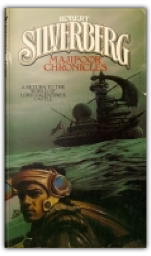

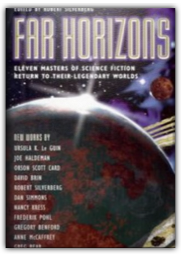

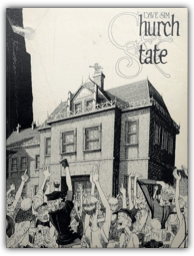
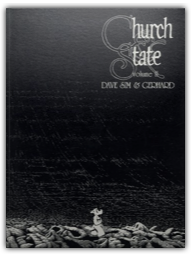

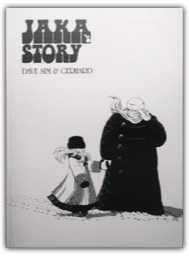
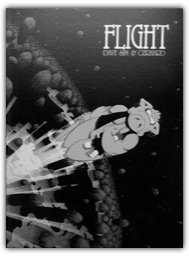
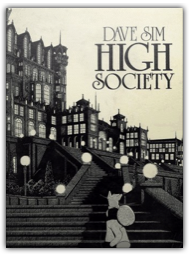
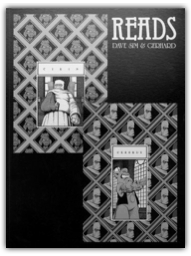
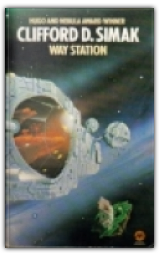
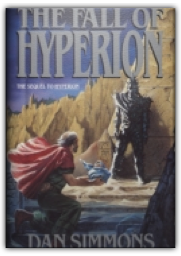
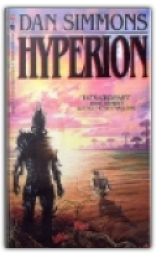
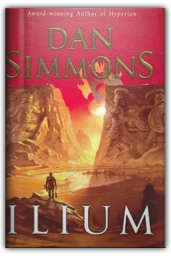

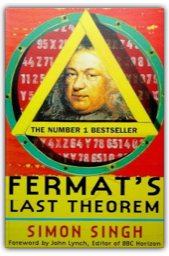

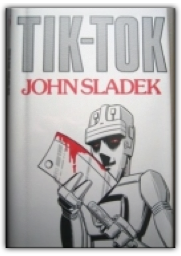
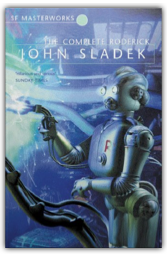



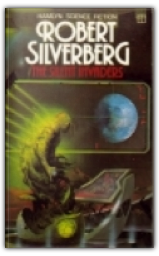

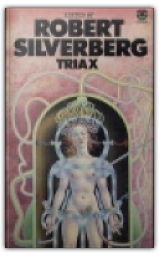

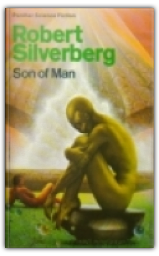
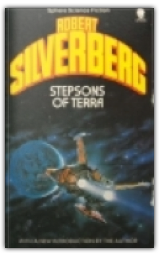
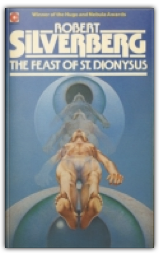
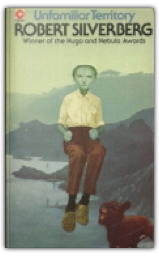

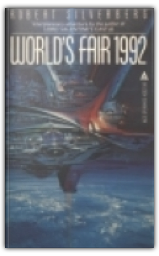
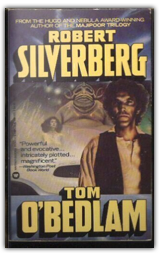
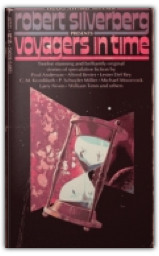

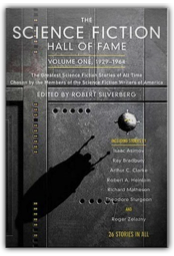
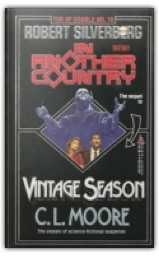
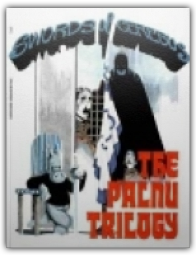
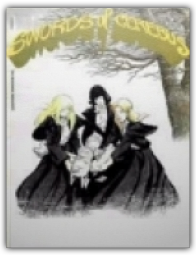
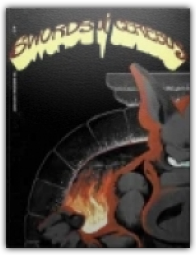
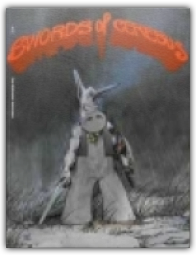
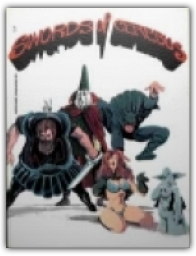
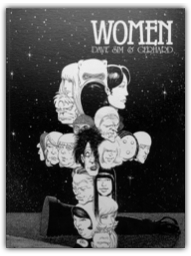
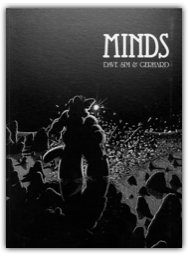

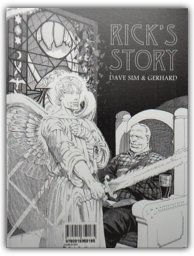


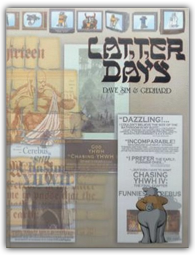
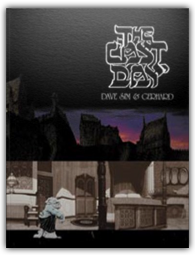

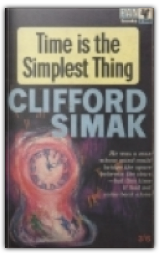
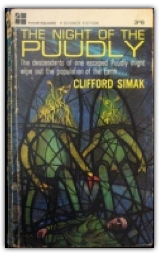
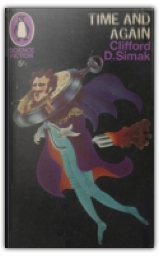


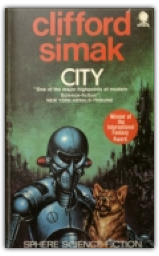
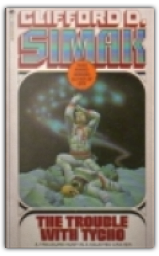
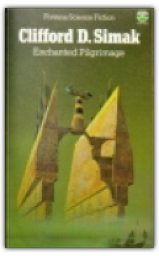
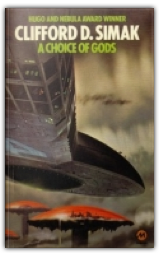
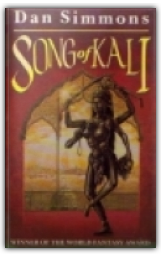

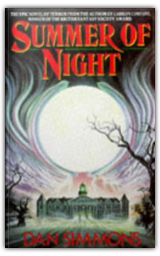


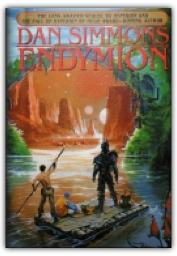
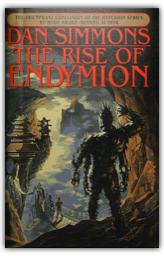




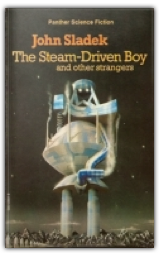

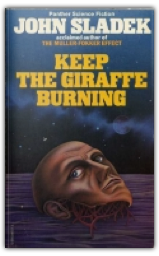
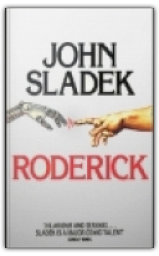
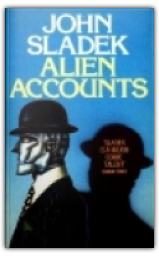


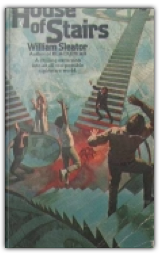


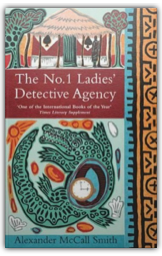


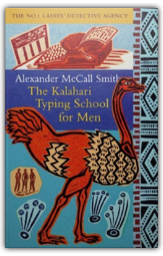






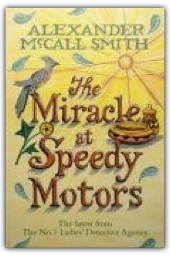
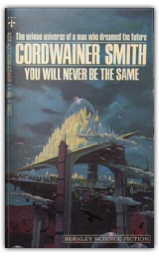
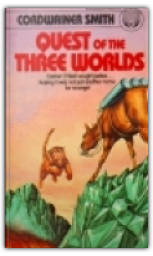
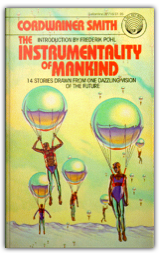
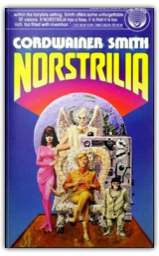
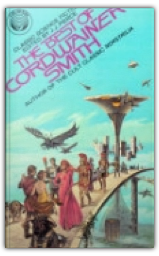


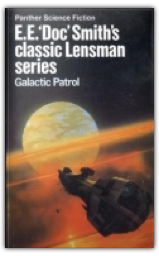
 Made with Delicious Library
Made with Delicious Library